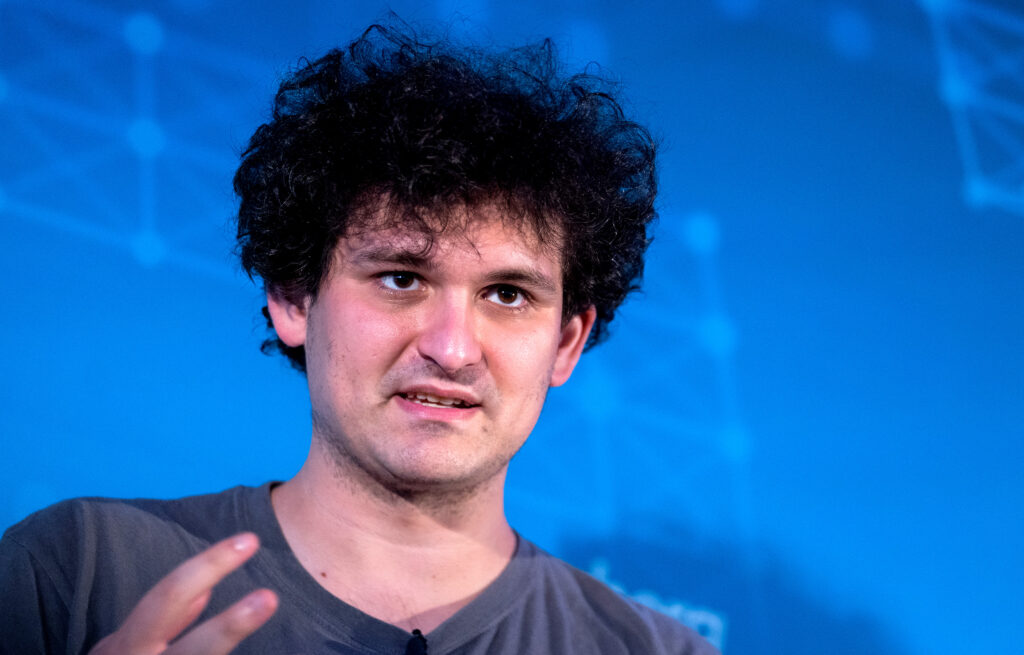- After only a month of court proceedings and four hours of jury deliberations, the court found Sam Bankman Fried guilty of all seven counts of crypto fraud.
- In a matter of 6 days, withdrawal demands exceeded $6 billion, a figure that was beyond FTX.
- What ignited its steady crash was a crypto news scoop from CoinDesk revealing that Alameda Research had placed its entire foundation in FTT, the native token of FTX.
The crypto market has significantly grown from a mere dollar in 2009 to $1.38 trillion, according to Forbes. The industry has ushered in a wave of innovations threatening the very concept of transitional banking. Its scalability, flexibility, and innate security have placed the sector atop its peers. In addition, developers have utilized its underlying technology, blockchain, to introduce a new wave of technology, decentralized applications.
However, its lucrative nature and anonymity have played a permanent mark on the franchise. Hackers, terrorist groups, scammers, and even organizations have tried to control the crypto market by utilizing its profits for personal gains. The FTX collapse is currently the highlight of the industry’s shortcomings. It showcased how centralizations and undefined crypto laws are the most outstanding demerits of the crypto industry.
In recent developments, Sam Bankman-Fried, the so-called King of Crypto, finally gets a verdict from his Cyrpo fraud case. The FTX saga is one of the worst moments of the crypto market, but the curtains finally draw to a close as the courts find Sam guilty of all counts.
The fiasco of the FTX Collapse draws to an end.
Since Bitcoin first existed, many individuals, governments, and regulatory bodies shunned its revolutionary concept. Many expected the crypto market crash to happen sooner than later, but the industry always prevailed. Veteran crypto traders boasted about the robust nature of digital assets, and having survived Mt Gox and numerous other crypto hacks, a crypto market crash was generally out of the question.
Unfortunately, we were all proven by a single individual, Sam Bankman Fried. The King of Crypto received his title after growing his custodial exchange, FTX, into a mighty powerhouse that rivaled Binance and Kraken. Furthermore, he went on to bridge the gap between stock trading and crypto trading by providing a platform where an individual was spoilt for choice. The workings of FTX were revolutionary, and it gained much recognition from crypto traders and peer- organizations.
Sam Bankman-Fried proved to the globe that a crypto market crash was possible. In November, the entire industry almost sunk were it not for the intervention of Binace and other actors. The FTX collapse attained the title of the worst crypto fraud case in history, causing a loss of over $1 billion.
Also, Read Discover Africa’s leading country for Crypto: Which nation takes the lead?
As a result of his action, the entire crypto market demanded justice for their losses. The US District Judge Lewis Kaplan set the court hearing and the sentencing of Sam on March 28, 2024. However, the evidence of a crypto market crash, shady business deals, and the ripple effect of the FTX rash were more than enough damning evidence for the Jusry. After only a month of court proceedings and four hours of jury deliberations, the court found Sam Bankman Fried guilty of all seven counts of crypto fraud.

Sam Bankman Fried proved to the entire world that collapsing the crypto market is possible.[Photo/Medium]
For some period, the lack of definite crypto laws shined a glimmer of hope for Sam, but his decisions already did the damage. He, however, still maintained his innocence, claiming that a series of poor business deals caused the FTX crash. Mark Cohen, Sam’s lawyer, said, “We respect the jury’s decision. But we are very disappointed with the result. Mr Bankman-Fried maintains his innocence and will continue to fight the charges against him vigorously.”
According to the court’s verdict, Sam Bankman Fried was guilty of looting over $8 billion for the exchange’s user funds out of sheer greed. The crypto fraud case was an anticipated event throughout the entire industry. The King of Crypto showed much promise and contributed significantly to expanding the use of digital assets. However, his greed and poor decisions almost collapsed the entire crypto franchise.
Manhattan US attorney Damian Williams took the opportunity to warn anyone involved in a crypto fraud case. He sternly said, “Sam Bankman-Fried perpetrated one of the biggest financial frauds in American history – a multibillion-dollar scheme designed to make him the King of Crypto – but while the cryptocurrency industry might be new and the players like Sam Bankman-Fried might be new, this kind of corruption is as old as time. When I became a US attorney, I promised we would be relentless in rooting out corruption in our financial markets. This is what relentless looks like. This case moved at lightning speed – that was not a coincidence; that was a choice.”
What caused the FTX collapse
Despite the instant crypto market crash, several events led to the FTX collapse. Generally, the FTX collapse was a 10-day event consisting of numerous failures, back-outs, and suspicious activities. However, what ignited its steady crash was a crypto news scoop from CoinDesk revealing that Alameda Research had placed its entire foundation in FTT, the native token of FTX. It revealed that the King of Crypto held several secrets, a death sentence for an industry built on transparency and trust.
After the news feed, exchanges, organizations, and crypto traders grew worried over what else FTX was hiding. Binance, its rival, announced on November 6 that it would sell its entire position in FTT tokens, roughly 23 million tokens worth $529 million. Binance CEO Changpeng Zhao stated that he based the move on risk management. CZ decided after significantly suffering from the collapse of Terra.
Also, Read the Characteristics of Ripple blockchain sustaining XRP among the top cryptocurrencies.
Unfortunately, this sparked an increased amount of withdrawals in FTX. Soon, the King of Crypto faced a liquidity crisis as investors began pulling their funding. Sam Bankman Fried reassured his clients that the FTX assets were stable. Unfortunately, no one bought the explanation. In a matter of 6 days, withdrawal demands exceeded $6 billion, a figure that was beyond FTX. On Nov.8, Binance announced it had reached a nonbinding agreement to buy all non-US businesses of FTX. This shed a positive light on Binance, and many thought it would prevent the FTX collapse.

After CZ backed out from acquiring non-US FTX business it sealed the fate of its rival.[Photo/Medium]
Authorities and regulatory bodies began questioning the workings of the King of Crypto. Eventually, this made FTX too hot of a topic for Binance to salvage. Binance had to cancel the to avoid reprimand that would eventually affect its reputation. This would seal the deal for Sam Bankman and solidify the FTX collapse.
On November 10, the Bahamas’ Security Regulation froze the assets of FTX Digital Markets, FTX’s Bahamian Subsidiary. Sam Bankman Fried had sought up to $8 billion in capital to prevent the FTX collapse. This desperate move caught the eye of the California Department of Financial Protection and Innovation. They initiated an investigation and a crypto fraud case against FTX.
On November 11, the King of Crypto relinquished his crown and stepped down as FTX’s CEO. The court then appointed John Ray as its new CEO, but the FTX collapse did the damage, and the crypto market crash was inevitable. John Pay filed for Chapter 11 bankruptcy protection on the same day, revealing roughly 130 affiliate companies as part of the proceeding. The bankruptcy filings revealed that FTX had assets and liabilities, each from $10 billion to $50 billion.
The Ripple Effect
Despite many claiming that the crypto market crash was the worst after-effect of the FXT collapse, its ripple effect far surpasses it. The crypto fraud case highlighted how scammers have evolved from targeting the local naive populous to establishing multi-billion dollar franchises. It also highlighted how centralization is the plague of the crypto market. Adding a centralized entity on a network built to defy such a concept presents a significant failing point.
This fact became the catalyst the US SEC required to launch a massive man-hunt on crypto exchanges. Today, many traders, crypto-enthusiasts, and changes have branded the US as the worst crypto ecosystem in 2023. In addition, many affiliate exchanges have suffered through their connection with FTX.
Also, Read Lawsuits prevent Ripple Network from hitting the $1 mark.
Crypto traders have backed out from associating with exchanges that worked with, partnered with, or stored their funding in FTX. This prejudice has affected many exchanges, forcing them to shut down or halt their operations. In Africa’s crypto exchanges, over ten have significantly suffered from the FTX collapse directly or indirectly.
As the curtains of the FTX saga draw to a close, this crypto fraud case is a reminder to all of us how dangerous the crypto market can become. In addition, it also highlights how robust the market is. Despite suffering an eight billion-plus loss, the industry managed to stay afloat, and in recent development, Bitcoin has finally gained momentum. The King of Crypto may face decades in jail, but he taught us a valuable lesson in accountability and transparency.
- SEO Powered Content & PR Distribution. Get Amplified Today.
- PlatoData.Network Vertical Generative Ai. Empower Yourself. Access Here.
- PlatoAiStream. Web3 Intelligence. Knowledge Amplified. Access Here.
- PlatoESG. Carbon, CleanTech, Energy, Environment, Solar, Waste Management. Access Here.
- PlatoHealth. Biotech and Clinical Trials Intelligence. Access Here.
- Source: https://web3africa.news/2023/11/08/news/sam-bankman-fried-guilty-ftx-collapse-ripple-effects/
- :has
- :is
- :not
- :where
- $1 billion
- $UP
- 10
- 11
- 2023
- 2024
- 23
- 28
- 33
- 8
- a
- About
- According
- accountability
- acquiring
- Action
- activities
- actors
- adding
- addition
- affect
- affected
- Affiliate
- After
- against
- Agreement
- Alameda
- ALAMEDA RESEARCH
- All
- almost
- already
- also
- always
- American
- among
- amount
- an
- and
- announced
- Anonymity
- Anticipated
- anyone
- applications
- appointed
- ARE
- AS
- Assets
- At
- attained
- attorney
- avoid
- backed
- Banking
- Bankman-Fried
- Bankruptcy
- Bankruptcy Filings
- bankruptcy protection
- based
- BE
- became
- become
- began
- between
- Beyond
- Biggest
- Billion
- binance
- Binance CEO
- binance ceo changpeng zhao
- Bitcoin
- blockchain
- Bloomberg
- bodies
- bought
- branded
- BRIDGE
- built
- business
- business deals
- businesses
- but
- buy
- by
- california
- California Department of Financial Protection and Innovation
- CAN
- capital
- case
- Catalyst
- caught
- caused
- causing
- Centralization
- centralized
- ceo
- Changes
- Changpeng
- Changpeng Zhao
- Chapter
- Chapter 11
- Chapter 11 Bankruptcy
- Chapter 11 bankruptcy protection
- charges
- choice
- claiming
- clients
- Close
- CNBC
- cohen
- coincidence
- Coindesk
- Collapse
- collapsed
- Companies
- concept
- connection
- Consisting
- continue
- contributed
- control
- Corruption
- country
- Court
- Courts
- Crash
- crisis
- Crown
- crypto
- Crypto ecosystem
- Crypto Exchanges
- crypto fraud
- crypto hacks
- Crypto Industry
- crypto laws
- Crypto Market
- Crypto market crash
- Crypto News
- crypto traders
- crypto trading
- cryptocurrency
- Cryptocurrency Industry
- Currently
- custodial
- CZ
- damage
- Damian Williams
- Dangerous
- day
- Days
- deal
- Deals
- Death
- decades
- decentralized
- Decentralized Applications
- decided
- decision
- decisions
- defy
- demanded
- demands
- Department
- Department of Financial Protection and Innovation
- designed
- Despite
- developers
- Development
- developments
- DID
- digital
- Digital Assets
- directly
- district
- Dollar
- down
- draw
- draws
- each
- ecosystem
- effect
- else
- end
- enough
- Entire
- entity
- establishing
- Even
- Event
- events
- eventually
- evidence
- evolved
- exceeded
- exchange
- Exchanges
- expanding
- expected
- explanation
- eye
- Face
- faced
- fact
- failing
- far
- fate
- fight
- Figure
- filed
- filings
- finale
- Finally
- financial
- Financial Protection
- Find
- First
- Flexibility
- For
- Forbes
- forcing
- found
- Foundation
- four
- franchise
- fraud
- fraud case
- from
- FTT
- FTT tokens
- FTX
- ftx collapse
- ftx crash
- FTX digital markets
- FTX saga
- funding
- gained
- Gains
- gap
- generally
- globe
- Governments
- Gox
- Greed
- grew
- Group’s
- Growing
- grown
- guilty
- hackers
- hacks
- had
- happen
- Have
- having
- he
- hearing
- Held
- Highlight
- Highlighted
- highlights
- him
- his
- history
- hitting
- hope
- HOT
- HOURS
- How
- However
- HTML
- HTTPS
- i
- in
- increased
- indirectly
- individual
- individuals
- industry
- industry’s
- inevitable
- initiated
- innate
- Innovation
- innovations
- instant
- intervention
- into
- introduce
- investigation
- Investors
- involved
- IT
- ITS
- jail
- John
- John Ray
- jpg
- judge
- Justice
- Kind
- King
- Kraken
- Lack
- later
- launch
- Laws
- lawyer
- lead
- leading
- Led
- lesson
- Lewis
- Lewis Kaplan
- liabilities
- light
- lightning
- Lightning Speed
- like
- Liquidity
- local
- LOOKS
- loss
- losses
- lucrative
- made
- maintains
- make
- managed
- management
- many
- March
- mark
- Market
- market crash
- Markets
- massive
- Matter
- max-width
- May..
- mere
- might
- million
- Moments
- Momentum
- Month
- more
- most
- move
- moved
- mr
- MT
- much
- nation
- native
- Native Token
- Nature
- network
- New
- New CEO
- news
- no
- nov
- November
- numerous
- of
- Old
- on
- ONE
- only
- Operations
- Opportunity
- or
- organizations
- Other
- our
- out
- outstanding
- over
- part
- partnered
- Pay
- peers
- period
- permanent
- personal
- Plague
- platform
- plato
- Plato Data Intelligence
- PlatoData
- played
- players
- Point
- poor
- position
- positive
- possible
- powerhouse
- presents
- prevailed
- prevent
- Proceedings
- profits
- promise
- promised
- protection
- proved
- proven
- providing
- pulling
- question
- rash
- RAY
- reached
- Read
- received
- recent
- recognition
- regulatory
- relentless
- reminder
- reputation
- required
- research
- respect
- result
- Revealed
- revealing
- revolutionary
- Ripple
- Ripple network
- Risk
- risk management
- Rival
- robust
- rooting
- roughly
- saga
- Said
- Sam
- Sam Bankman
- Sam Bankman-Fried
- same
- Scalability
- Scammers
- scb
- scheme
- scoop
- SEC
- secrets
- sector
- security
- sell
- sentence
- Series
- set
- seven
- several
- shed
- shortcomings
- showcased
- showed
- Shut down
- significant
- significantly
- single
- some
- soon
- sought
- sparked
- speed
- stable
- stated
- stay
- steady
- Still
- stock
- stock trading
- stored
- subsidiary
- such
- suffered
- suffering
- Survived
- suspicious
- takes
- targeting
- taught
- Technology
- ten
- Terra
- terrorist
- than
- that
- The
- their
- Them
- then
- they
- this
- thought
- Through
- throughout
- time
- Title
- to
- today
- token
- Tokens
- too
- took
- top
- topic
- Traders
- Trading
- Transparency
- tried
- Trillion
- true
- Trust
- undefined
- underlying
- unfortunately
- us
- US Attorney
- use
- utilized
- Utilizing
- Valuable
- Verdict
- very
- veteran
- was
- Wave
- we
- went
- were
- What
- when
- which
- while
- will
- Williams
- with
- withdrawal
- Withdrawals
- worked
- workings
- world
- worried
- Worst
- worth
- would
- xrp
- zephyrnet
- Zhao













